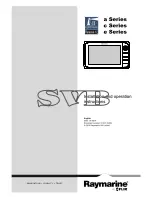
General Information
06-237518-001
1-7
July 2018
1-4.2
Selector Valve System
Should the system be designed to protect more than one area from a common cylinder bank,
then use one or more pneumatically operated selector valves.
The pressure required to operate the pneumatic actuators is taken from the main distribution
manifold via a pressure-regulating valve (pressure is reduced to 8 bar) and is channelled
through a pilot line to a series of low pressure solenoid valves. Activation of a solenoid valve
will release pressure to the pneumatic actuator on the selected 2-way Selector valve.
The selector valve is provided with a dual-action, pneumatically-operated actuator capable of
opening the valve in under 2 seconds.
For safety reasons the selector valve has to be manually closed after a release.
1-4.3
Release Time
For Industrial systems, ISO 14520/EN 15004-1, NFPA 2001, and VdS requires that 95% of the
minimum design quantity of the required agent be released within 120 seconds for Class A fires
and 60 seconds for Class B. Standard Australia requires the extinguishing concentration to be
achieved within 60 seconds and the remaining agent up to the minimum design concentration
be discharged within 120 seconds.
Other countries/authorities may have different requirements than those mentioned above.
Per NFPA 2001, US Class B fires (flammable liquids and gases) require a 60 second discharge
time. US class A and C fires requires 120 second discharge time.
1-4.4
Pressure Monitoring
Kidde IGS offers instrumentation options for remote and local pressure monitoring of the
content within the cylinders:
•
Local monitoring by visual inspection of a pressure gauge on each cylinder
•
Remote monitoring by wiring to the pressure gauge/switch on each cylinder
•
Remote monitoring which is performed as a single loop installation i.e. all electrical contacts
are connected in a single loop giving a common indication of lost pressure in any of the
cylinders.
1-4.5
Placement Supervision
The solenoid coil of the release unit is an integral part of the assembly. Removal of the assem-
bly from the cylinder will cause the supervisory pressure switch to change contact positions,
which is monitored by the panel. This condition satisfies the NFPA 2001, 2015 Edition require-
ments for placement supervision.
Summary of Contents for 400 Series
Page 2: ...Table i Revision History Revision Change Description AA Initial Release ...
Page 16: ...July 2018 xiv 06 237518 001 THIS PAGE INTENTIONALLY LEFT BLANK ...
Page 157: ...06 237518 001 A 1 July 2018 APPENDIX A SAFETY DATA SHEETS ...
Page 188: ...July 2018 A 2 06 237518 001 THIS PAGE INTENTIONALLY LEFT BLANK ...
Page 189: ......
















































